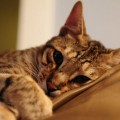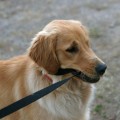 Fur Shui: An Introduction to Animal Feng Shui is a delightful little book that I thoroughly enjoyed reading. It provides a very basic introduction to using the art of feng shui to balance your home and/or your pet’s environment to benefit your pet’s health, whether your pet is a dog, a cat, a goldfish or some other type of animal.
Fur Shui: An Introduction to Animal Feng Shui is a delightful little book that I thoroughly enjoyed reading. It provides a very basic introduction to using the art of feng shui to balance your home and/or your pet’s environment to benefit your pet’s health, whether your pet is a dog, a cat, a goldfish or some other type of animal.
Written and illustrated by Paula Brown, Fur Shui introduces the concept of the what Paul terms the “black ‘cat’ school of feng shui”, using a clever play on words to compare her model of animal feng shui with the black hat school of feng shui which is practiced by other feng shui practitioners.
Feng Shui for Dogs, Cats and Other Animals: Using the Bagua for Balance
The bagua is introduced as an octagonal shaped area whose eight sides together with the center represent the nine areas of life:
- career
- skills and knowledge
- family
- wealth
- fame
- relationships
- creativity and children
- helpful people and travel
- health
Each of these areas is referred to as a gua. The bagua, according to Fur Shui can be applied to your home, to an individual room in your home, to your garden or outdoor space.
The Role of Color, Shapes, Numbers and Elements in Animal Feng Shui
The book goes on to describe how each individual gua is represented by certain colors, shapes, numbers and elements. For instance, the following characteristics represent the career gua:
- the color black
- the element water
- the number six
- shapes that are “irregular, undulating, free-form (not sharp and pointy, square and rectangular but soft and rounded)”
Fur Shui goes on to describe each individual gua in regards to what you may want to include in the corresponding area and what you should avoid in the area. It discusses which elements go together well and which do not.
Dos and Don’ts of Pet Feng Shui
Paula also mentions a few things which are important in feng shui. She terms them the dos and don’ts of fur shui. Many of them are common sense precautions, such as not allowing food dishes and water bowls to become soiled and keeping litter boxes clean.
In truth, these items are things that any responsible pet owner should practice, regardless of whether they are fur shui or feng shui practitioners. Dirty food dishes and water bowls can make your pet sick. A uncleaned litter box may convince your cat to start toileting elsewhere and may contribute to causing illness for your cat also.
Another common sense precaution listed in the book is keeping turtles out of the kitchen. Again, though fur shui or feng shui may teach this, it is good advice for any family with a turtle because of the threat of salmonellosis associated with turtles.
The Art of Fur Shui
Though I was somewhat skeptical when I first received this book, I knew virtually nothing about feng shui and even less about using it for pets. I decided to approach the book with an open mind and I’m glad I did.
Paula is adamant that using feng shui does not replace the need for proper veterinary care. If your pet is ill, she urges you to seek the proper advice. She recommends fur shui instead as a means of making your home more comfortable for your pet, which may become especially important if he is recovering from an illness.
One of the other things that struck me about Paula’s descriptions in Fur Shui is her belief that animals have jobs to perform. She contends that fur shui helps our pets carry out their jobs and she goes on to say that their job may be to provide companionship and guidance to their humans. That may be a bit of a cliche, but I still like that idea.
Overall, I would recommend Fur Shui: An Introduction to Animal Feng Shui to any pet owner who wants to broaden their horizons a bit and/or read a charming and sometimes amusing piece of literature. Paula writes in a very engaging and easy to read style. The book does not take long to read cover to cover. But you may want to keep it handy as a quick reference guide for the next time you rearrange or renovate your home.
In the interest of full disclosure, the book Fur Shui: An Introduction to Animal Feng Shui was provided by the author and/or her publisher for the purpose of a review. No financial incentive was either offered or received.








